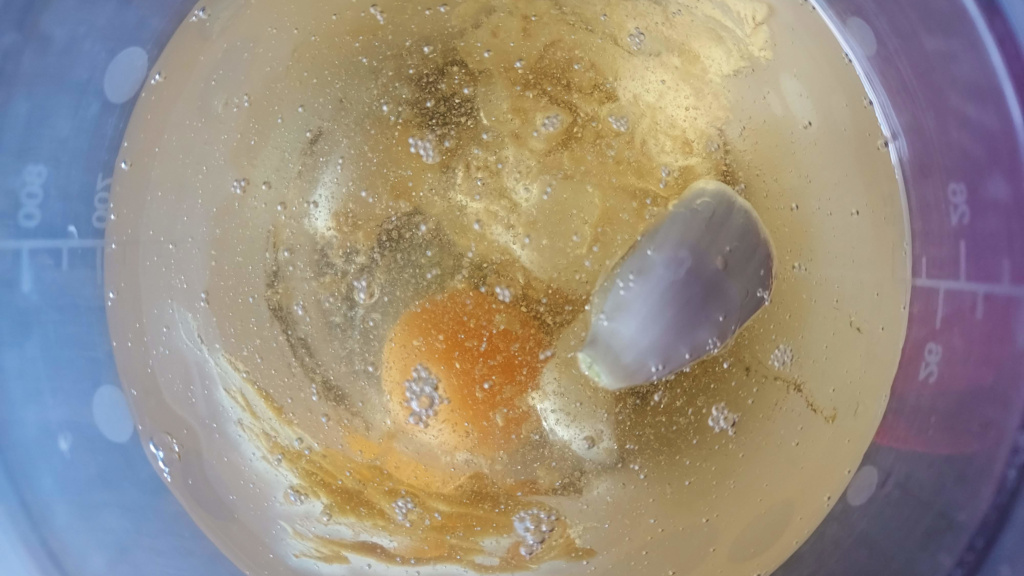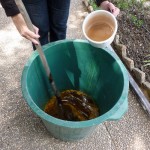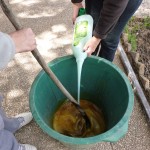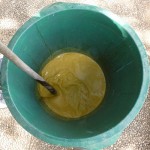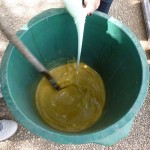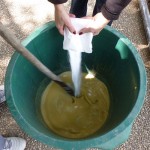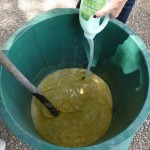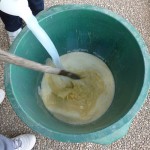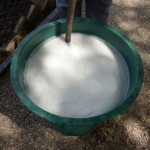Like many people, I started making my own sourdough in the COVID lockdown and it has been a learning experience. This is my tried and tested recipe and method for 50% brown flour/50% strong white flour loaf.
INGREDIENTS
- 250g strong white flour
- 250g brown bread flour
- 320g warm water
- 15g salt
EQUIPMENT
- a hand blender or food processor with dough hook
- a large stainless steel bowl
- a spatula
- a plastic bowl with a lid (for mixing the starter)
- a loaf tin (this is one I buy from Amazon)

AUTOLYSE
In order to strengthen the gluten in the brown flour, I mix the flour, water and salt beforehand. This is called AUTOLYSING and it softens whole wheat flour and produces a better texture loaf. You are not supposed to add the salt at this stage but I kept forgetting it the next day so I now chuck that in too.
STARTER
Your starter is the most important thing in sourdough breadmaking. I keep mine in a small WECK jar with a wooden lid on the top shelf of the fridge, right at the back, so that no one will take it out to get to something and leave it out. It’s a good idea to have a loose-fitting lid but found that I kept breaking the original glass lids that came with the WECK jar:


FEEDING THE STARTER
I only feed my starter when I make bread. It is perfectly happy left in the fridge until then, and there is no problem if you go away for a couple of weeks. It might be a bit sluggish the first few times you use it, but it will soon pick up.
METHOD
PREVIOUS AFTERNOON:
Take your starter out of the fridge and leave it on the counter.
PREVIOUS EVENING:
MIX THE STARTER:
I always keep back 63g of starter. When I want to make bread, I transfer it to the plastic bowl and mix it together with 63g of organic white rye flour and 63g of warm water. I then put 63g of the mixture in a clean jar and put this back in the fridge. The remaining 125g of starter mix is then covered and left overnight somewhere not too cold.
AUTOLYSE THE FLOURS:
In your large stainless steel bowl, use a hand blender or food processor to mix together the white flour (250g), the brown flour (250g), the water (320g) and the salt (15g). Cover the bowl with a large plate and leave overnight.
BREAD-MAKING DAY
07:00: MIX FLOUR AND STARTER
I mix together the flour mixture and the starter using a hand blender or food processor.
My method for this is to spread the flour mixture as thin as possible up the sides of the bowl using the spatula. I then add the starter to the middle and fold over the sides to completely cover the starter. I then combine it thoroughly using the mixer. This is then left covered for 60 minutes.
08:00: 4 STRETCHES + 4 STRETCH&FOLDS
I first stretch the dough four times. You are basically pulling it apart between your hands. You then do four stretch and folds. Rather than explaining how to do this, it is probably easier to show you what I mean by this, so here is a video:
https://www.youtube.com/watch?v=eFaKId5ijNg
You then repeat the stretch and folds four more times every 30 minutes:
08:30 STRETCH&FOLD 1
09:00 STRETCH&FOLD 2
09:30 STRETCH&FOLD 3
10:00 STRETCH&FOLD 4
10:00 PROVING THE BREAD – 3 HOURS
Once you have finished all the stretch and folds, you prove the bread for 3 hours. For this, I place the bread in the loaf tin and put it in a warm place with a cloth over it.
Fortunately, I have a bread rising setting on the oven which keeps it at 40ºC. You should not use any higher temperature as this will start to cook the bread.
In order to stop the dough sticking to the tin, I line the loaf tin first. You can use greaseproof paper for this. However, I prefer to make my own liners from BBQ silicone liners so that I can reuse them.
Here is a video to explain how:
https://www.youtube.com/watch?v=SnVogHJ5kFM
This is a photo of the bread once it has been proved:

13:00 BAKING THE BREAD – 60 MINUTES
Remove the loaf tin from the oven. Heat the oven to 180ºC and then bake the bread for 60 minutes.
Remove the bread from the tin and leave to cool.





